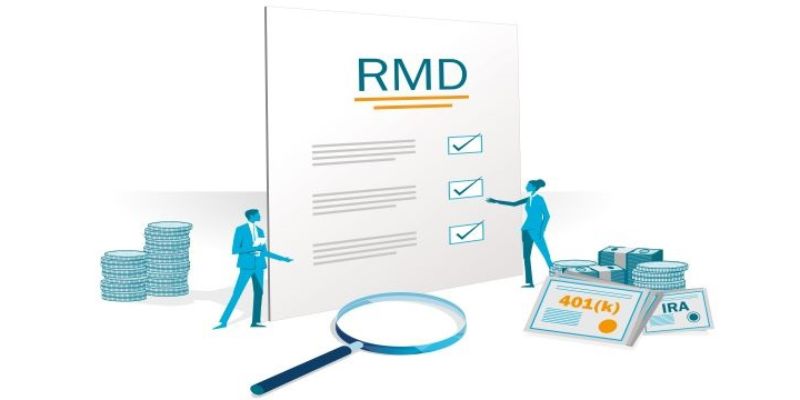The Role Of ESG (Environmental, Social, Governance) In Investing Your Portfolio
There has been a noticeable shift in how investors approach their portfolios in recent years. More than just focusing on financial returns, there is a growing interest in investments considering ethical and sustainable factors. This is where Environmental, Social, and Governance (ESG) investing comes into play.
ESG investing goes beyond traditional financial metrics, assessing companies based on their environmental, social, and governance practices. As investors become increasingly conscious of their investment choices' social and ecological implications, ESG investing has gained significant traction, offering a way to generate financial returns while making a positive impact.

Understanding ESG Investing
ESG investing isn't just a passing trend; it's a strategic approach incorporating environmental, social, and governance factors into investment decisions. This method extends beyond standard financial analysis by assessing companies' ethical conduct and capacity to manage risks associated with these critical areas.
Environmental Factors
These include a company's impact on the planet, such as its carbon footprint, energy usage, waste management, and commitment to renewable resources. Companies prioritizing environmental sustainability are increasingly seen as less risky and more future-oriented, making them attractive to ESG investors.
Social Factors
This dimension focuses on a company's relationships with its employees, customers, and communities. It includes labour practices, human rights, diversity and inclusion, and how the company interacts with the communities in which it operates. Companies that score high on social criteria are often better at attracting and retaining talent and maintaining customer loyalty.
Governance Factors
Governance involves the internal processes and practices that govern a company. This includes executive compensation, board diversity, transparency, shareholder rights, and ethical business practices. Strong governance ensures that companies are run efficiently and in the best interests of their stakeholders, reducing the risk of scandals or mismanagement.
Benefits of ESG Investing
Incorporating ESG factors into your investment portfolio can offer several substantial benefits, both in terms of financial returns and broader impact:
Enhanced Risk Management
ESG investing can help mitigate risks often overlooked in traditional financial analysis. For example, companies with poor environmental practices may face regulatory fines or reputational damage, which can negatively impact their economic performance.
Improved Financial Performance
Companies with robust ESG practices are generally better at managing risks, seizing new opportunities, and promoting positive stakeholder relationships. Over the long term, this can translate into better financial returns for investors.
Positive Social and Environmental Impact
ESG investing enables investors to align their portfolios with their values. Investors can actively support positive societal and environmental change by choosing companies that emphasize sustainability and social responsibility. This approach resonates especially with younger generations, who are increasingly concerned about the broader impact of their financial choices.
Enhanced Reputation
For both individual investors and institutions, being associated with ESG investing can enhance their reputation as socially responsible investors. This can be particularly important for organizations that want to demonstrate their commitment to sustainability and ethical business practices. In turn, this can attract like-minded clients and partners, furthering their impact and success.

ESG Investment Strategies
There are multiple strategies for incorporating ESG factors into your investment portfolio, depending on your financial goals, values, and level of expertise:
ESG-Focused Funds
These funds specifically target companies with high ESG ratings. They often use screening processes to include companies with strong ESG practices and exclude those that fail to meet specific ethical standards. For example, an ESG-focused fund might avoid companies involved in fossil fuels or tobacco while investing heavily in renewable energy or technology companies with exemplary social practices.
ESG-Integrated Funds
Unlike ESG-focused funds that exclusively invest in high ESG-rated companies, ESG-integrated funds consider ESG factors alongside traditional financial metrics. These funds aim to enhance returns and manage risks by integrating ESG data into their investment analysis.
Thematic Investing
This strategy includes investing in companies aligned with specific ESG themes, such as clean energy, water conservation, or social equality. Thematic investing allows investors to target areas where they believe they can have the most significant impact while pursuing financial returns.
Individual Stock Selection
For experienced investors, selecting individual stocks based on their ESG performance can be an effective strategy. This approach requires diligent research and analysis to identify companies with solid financials that excel in environmental, social, and governance practices. This method offers the most control but also comes with higher risks and the need for ongoing monitoring.
Integrating ESG into Your Portfolio
Integrating ESG factors into your portfolio demands thoughtful planning and a solid grasp of your investment goals. Here are some steps to consider when integrating ESG into your investment strategy:
Define Your ESG Goals
Begin by determining what ESG factors are most important to you. Are you more focused on environmental sustainability, social justice, or corporate governance? Your values will guide your investment choices. For example, if you are passionate about combating climate change, consider prioritizing investments in renewable energy or companies with low carbon footprints.
Conduct Thorough Research
Research is crucial in ESG investing. Look for funds or companies with strong ESG ratings, but also dig deeper to understand how these ratings are calculated and whether they align with your values. Tools and resources like the MSCI ESG Ratings, Sustainalytics, or Bloomberg’s ESG Data Service can provide valuable insights into a company's ESG performance.
Diversify Your Portfolio
Like traditional investing, diversification is critical to managing risk in ESG investing. Make sure that your portfolio includes a mix of asset classes, industries, and geographic regions. This approach could help you achieve a balance between financial returns and ESG impact, reducing the risk that any one investment will negatively affect your overall portfolio.
Monitor and Rebalance Regularly
ESG investing is not a “set it and forget it” strategy. Regularly review your portfolio to ensure it continues to align with your ESG goals and make adjustments as necessary. For example, if a company in your portfolio faces a significant governance issue, you may need to reassess its place in your portfolio. Additionally, as ESG practices and data evolve, your strategy may need to adapt to new opportunities and risks.
Final Words
ESG investing is not just a passing trend; it's a thoughtful approach that combines the pursuit of financial gains with the desire to make a meaningful impact. Integrating environmental, social, and governance factors into your investment strategy can enhance risk management, achieve competitive returns, and contribute to a more sustainable and just world.





